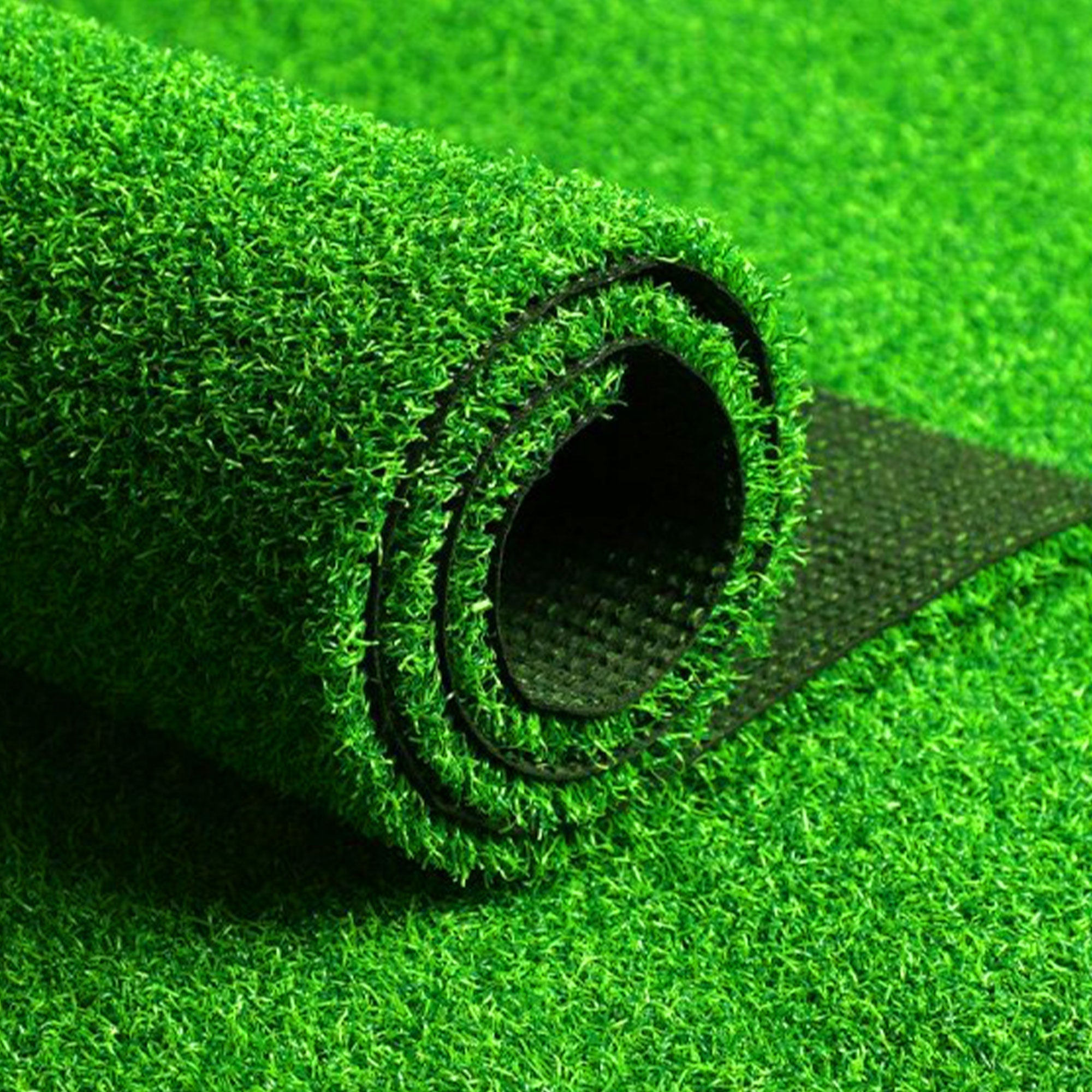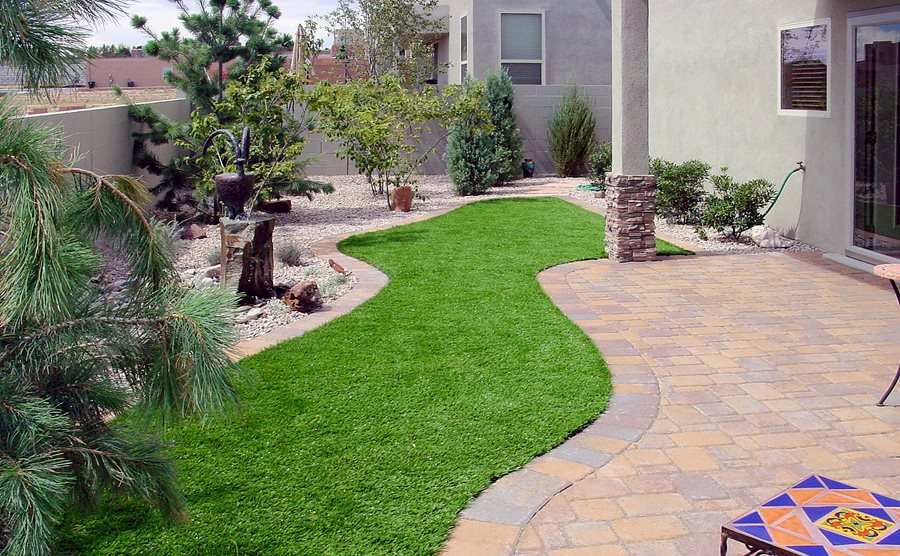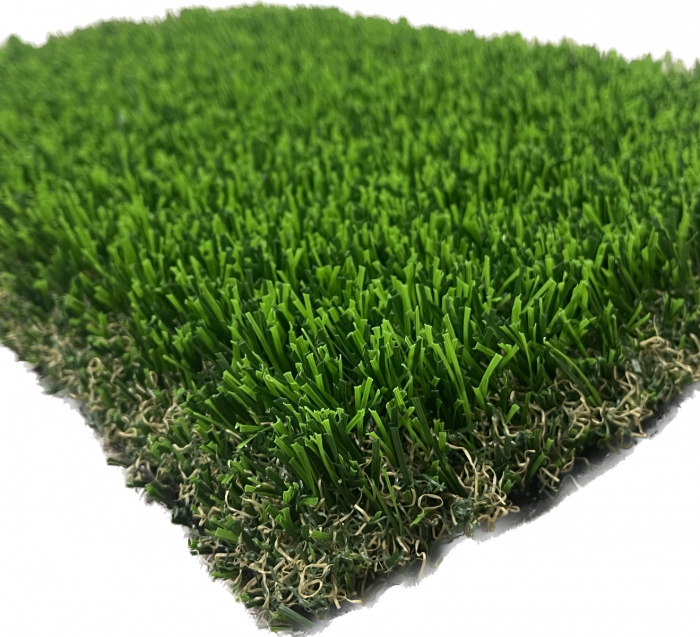Experience the Beauty of Green Mesa artificial turf with Easy Maintenance
Experience the Beauty of Green Mesa artificial turf with Easy Maintenance
Blog Article
How Does Synthetic Grass Installment Transform Your Landscape?
The installation of man-made lawn presents a diverse possibility for landscape transformation, providing a blend of aesthetic improvement and sensible benefits. Past the immediate aesthetic allure of a constantly eco-friendly space, synthetic grass considerably lowers maintenance demands and water consumption. Its versatility permits for creative landscaping remedies tailored to different settings, making it an engaging selection for both residential and commercial applications. The ramifications of such an improvement extend beyond plain visual appeals and ease, motivating more expedition right into the long-term impacts on expense, ecological sustainability, and general landscape health and wellness.
Benefits of Synthetic Grass
When taking into consideration landscaping remedies, the benefits of synthetic grass become progressively evident. One of the most significant advantages is its low upkeep demands. Unlike natural lawn, which necessitates routine mowing, watering, and fertilization, artificial turf keeps its rich look without these labor-intensive jobs. This enables property owners to allocate their time and sources to other pursuits.
In addition, synthetic grass provides a constant having fun surface area, making it perfect for recreational areas and sports areas. Arizona artificial grass. Its longevity guarantees that it can endure heavy foot traffic without the deterioration connected with natural yard, therefore advertising year-round usability
Environmental advantages also play an important duty in the allure of synthetic lawn. By eliminating the need for herbicides and chemicals, it adds to a healthier ecological community. The decrease in water usage is considerable, specifically in areas prone to drought.
In addition, fabricated lawn boosts visual allure, supplying a vivid green landscape that remains uniform throughout the seasons. This uniformity can raise residential or commercial property worth and visual allure, making it an eye-catching choice for organizations and homeowners alike. In recap, the countless advantages of man-made grass make it an engaging selection for contemporary landscape design solutions.
Expense Cost Savings With Time

First of all, artificial turf gets rid of the demand for recurring expenses related to water, fertilizers, pesticides, and lawn upkeep solutions (Mesa artificial turf). Home owners can expect to conserve considerably on their water expenses, particularly in regions prone to drought, where irrigation of all-natural turf can come to be much too pricey. In addition, the lowered demand for chemical therapies not only lowers costs but likewise minimizes labor expenditures related to lawn treatment
Over time, the collective financial advantages of fabricated turf can significantly surpass the preliminary expenses, making it a sensible investment for those looking to improve their landscapes while likewise handling their budgets properly. In summary, the long-lasting cost financial savings connected with fabricated grass make it an appealing choice for homeowners looking for both appearances and financial carefulness.
Ecological Effect
The environmental effect of synthetic grass is a subject of significant passion and argument. Proponents say that artificial grass saves water, as it eliminates the demand for watering, which is especially helpful in arid regions. This water preservation can cause lowered strain on regional water sources and lower utility expenses for homeowners. Additionally, synthetic grass eliminates the necessity for chemical plant foods and pesticides, which can pose threats to local ecosystems.
However, worries regarding the ecological impact of man-made turf linger. The manufacturing of synthetic products typically calls for considerable energy and petroleum sources, adding to carbon discharges. When artificial lawn reaches the end of its life cycle, disposal can become troublesome, as numerous products are not naturally degradable and can finish up in land fills (Mesa artificial turf).
Another location of issue is the potential for microplastics to leach into the soil and waterways, which could adversely affect aquatic life and environments. Therefore, while man-made turf offers certain environmental benefits, it also positions obstacles that warrant cautious factor to consider. Stabilizing the benefits of water conservation with the environmental impacts of manufacturing and disposal is necessary for making informed landscape design choices.
Design Adaptability
Synthetic lawn opens a world of style flexibility, allowing house owners and landscape architects to create cosmetically pleasing and useful outside spaces. Unlike standard turf, synthetic grass can be customized to fit different themes, styles, and objectives, boosting the total landscape style.
One of the key advantages of fabricated turf is its adaptability. It can be perfectly incorporated right into diverse atmospheres, from modern gardens to rustic patio areas. House owners can select from a range of appearances, colors, and stack elevations, making sure that the grass matches existing features and architectural components. This customization reaches one-of-a-kind installations, such as curvilinear layouts, which can develop eye-catching vibrant formats and focal factors.

Maintenance and Durability
With very little upkeep required, synthetic grass uses a practical service for property owners looking for a low-maintenance landscaping option. Unlike natural grass, which requires regular mowing, watering, and fertilization, synthetic lawn considerably content lowers the moment and effort needed to maintain an eye-catching yard.
The longevity of synthetic turf is an additional compelling benefit. Usually, fabricated grass can last between 15 to 25 years, depending on the quality of materials used and the level of foot website traffic it endures.
Additionally, upkeep jobs for man-made grass are simple. Periodic cleaning to maintain the blades upright, rinsing to get rid of particles, and regular infill replenishment are usually adequate to preserve its look and functionality. This simplicity of maintenance permits home owners to appreciate their outside rooms without the problem of considerable labor.
Final Thought
Finally, synthetic grass installment dramatically improves landscapes by giving a vibrant, low-maintenance option to all-natural yard. The advantages include substantial price financial savings, a favorable ecological influence via minimized water usage and chemical treatments, and remarkable style convenience that fits different outdoor visual appeals. Furthermore, the longevity of synthetic grass makes certain longevity also under hefty foot website traffic. Overall, fabricated turf becomes a lasting and practical service for transforming outside spaces right into practical and aesthetically enticing atmospheres.

In verdict, fabricated lawn installation substantially enhances landscapes by useful site supplying a vibrant, low-maintenance alternative to all-natural yard.
Report this page